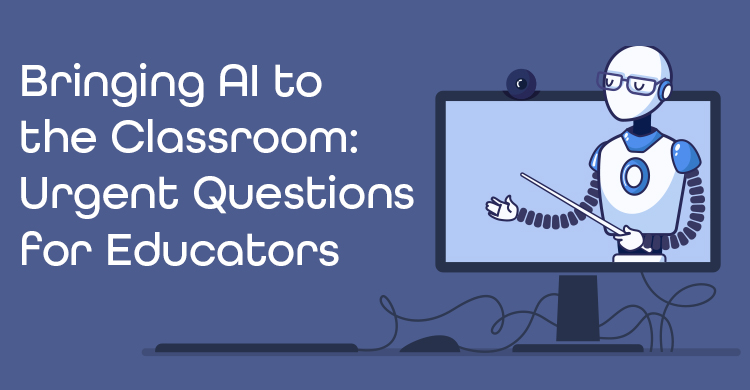When it comes to digital technologies, facilitating effective learning integration is the most important—but also perhaps the most difficult—task school leaders face. Like teachers, administrators often are unfamiliar with the affordances of many digital devices and environments. Even if they are users of digital technologies in their personal lives, school leaders may not adequately understand the learning and teaching uses of those tools. Ramping up entire schools to robust technology-suffused pedagogy is necessary but also can be quite a challenge.
Understand the technology and how it will be used
Principals and superintendents need deep understandings of what effective technology integration looks like (Mishra & Koehler, 2006; McLeod & Graber, 2014). It is not enough for administrators to simply place quantities of computers in schools and classrooms and then hope teachers and students use them. Leaders also must be able to discern the quality of technology usage in the instructional process. Otherwise, schools run the very real risk of using technology for technology’s sake rather than for meaningful, relevant, and authentic learning purposes. Effective leaders of technology-suffused learning will institute models and frameworks, systemwide discussions, classroom observation and evaluation techniques, and other evaluative and non-evaluative mechanisms that facilitate explicit analysis and recognition of appropriate and powerful technology integration.
Hire sufficient specialist support
Some of the most significant barriers to teachers’ effective usage of technology relate to the lack of systemic supports. Many of these are embodied in ISTE’s Essential Conditions document (ISTE, 2009a), which outlines numerous factors that must be in place for effective technology integration to occur. One critical support condition is the presence of adequate technical support personnel. Schools usually burden information technology staff with far greater computer support ratios than do for-profit or other nonprofit organizations (McLeod, 2003). Overburdened by the sheer numbers of hardware, software, and educators under their domain, school technology personnel often are unable to provide robust support for classroom technology integration. This frequently results in long waits for assistance and/or repairs, with concurrent impacts on teachers’ willingness to implement digital technologies into their instruction. School systems also typically underinvest in technology-integration personnel, using their monies instead for devices, software, and networks and the people to maintain them. Classroom teachers often have nowhere to turn for integration assistance other than peers and the occasional professional development day.
Evaluate (with students in mind) before purchasing
In addition to ensuring better technical-support structures, administrators also must work with teachers, curriculum developers, and subject-area experts to ensure that digital technologies are appropriately aligned with and operate in service of instructional and curricular goals (Jacobs, 2010). Too often, technologies are purchased without appropriate understandings of how they will be used instructionally. Tales of underutilized software systems and computing technologies sitting unused are legion throughout our nation’s school systems. School leaders frequently are susceptible to vendors’ sales pitches and should take great care to incorporate the input of front-line users into technology purchasing and decision-making processes. Administrators also must be aware of and mitigate against schools’ general tendency to purchase teacher-centric technologies such as interactive whiteboards, document cameras, and student response systems, rather than student-centric technologies such as laptops, tablet computers, digital cameras and camcorders, and scientific probeware for which students, not teachers, are the primary users. Resources are always scarce, and funding streams are never enough. As such, school leaders should strive to get maximal outcomes from their technology investments.
It’s easy to walk through almost any school building and see digital learning tools used either rarely or primarily by teachers. Although it is important for teachers to be effective users of digital technologies, it is even more critical that students graduate our school systems as technology-fluent citizens, able to meet learning, citizenship, and workplace demands as needed (November, 2010; Trilling & Fadel, 2009). Schools do not achieve this goal by having students passively observe others using technology.
How is your school doing at providing the appropriate supports and expectations for student-centered technology usage?
Scott McLeod can be reached at Dangerously Irrelevant or at @mcleod.
References:
International Society for Technology in Education (ISTE). (2009a). Essential conditions. Eugene, OR: Author.
Jacobs, H. H. (2010). Curriculum 21: Essential education for a changing world. Alexandria, VA: ASCD.
McLeod, S. (2003). National district technology coordinators study. Technical report 1: Personal and professional characteristics. Naperville, IL: North Central Regional Educational Laboratory, United States Department of Education.
McLeod, S., & Graber, J. (2014, Spring). Technology-rich unit design and classroom observation template [trudacot]. Prairie Lakes Area Education Agency, Pocahontas, IA.
Mishra, P., & Koehler, M. J. (2006). Technological pedagogical content knowledge: A framework for integrating technology in teacher knowledge. Teachers College Record, 108(6), 1017–1054.
November, A. (2010). Technology rich, information poor. In J. Bellanca & R. Brandt (Eds.), 21st century skills: Rethinking how students learn (pp. 275–284). Bloomington, IN: Solution Tree.
Trilling, B., & Fadel, C. (2009). 21st century skills: Learning for life in our times. San Francisco, CA: Jossey-Bass.
[author_bio id=”1366″]







